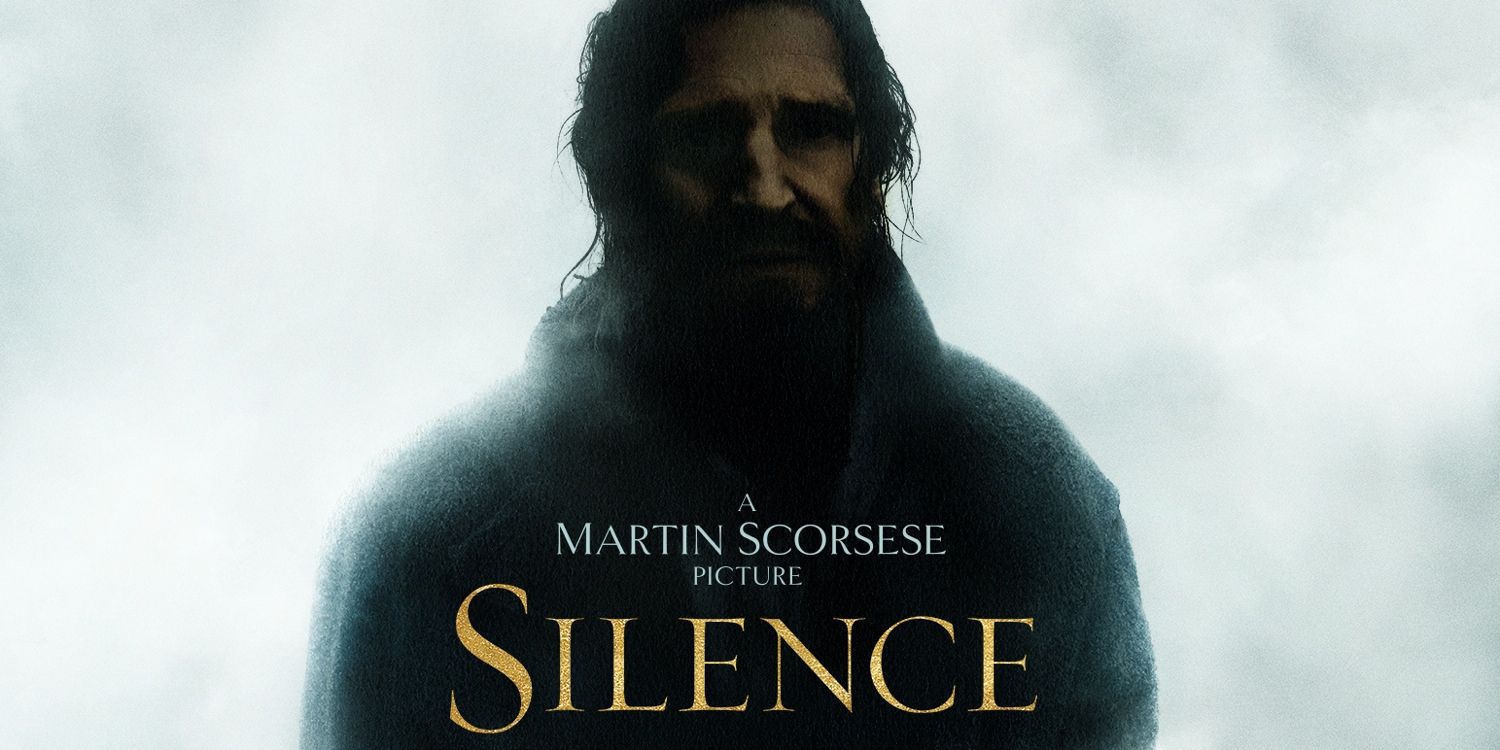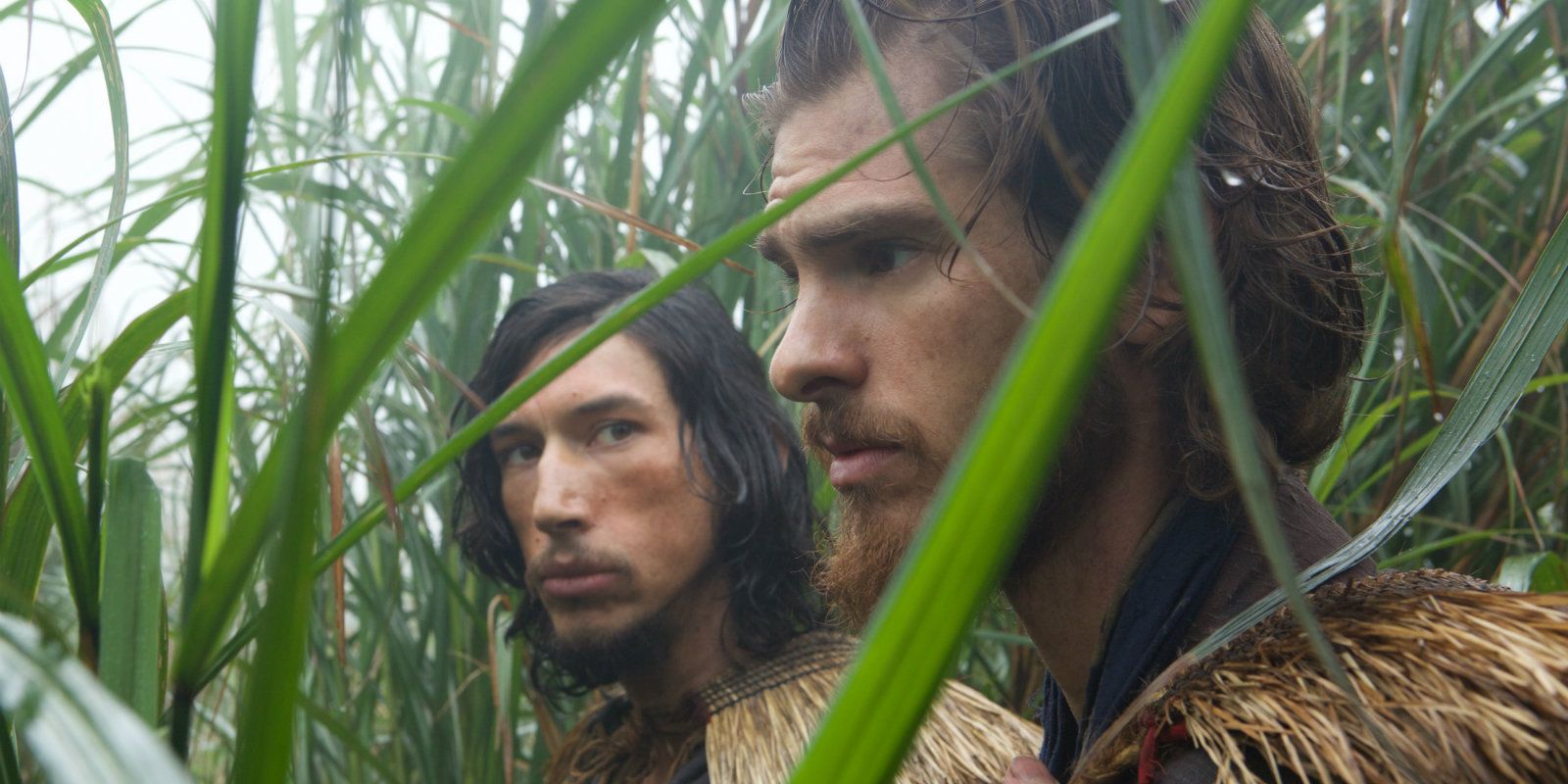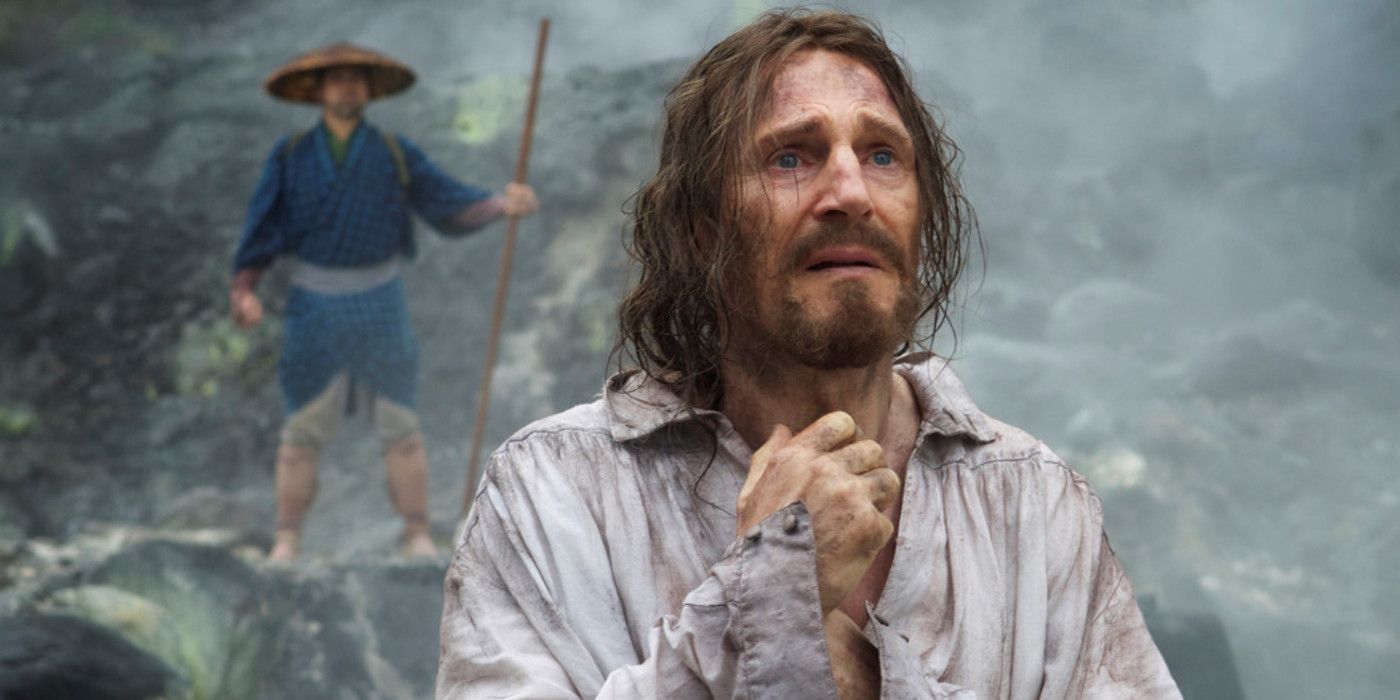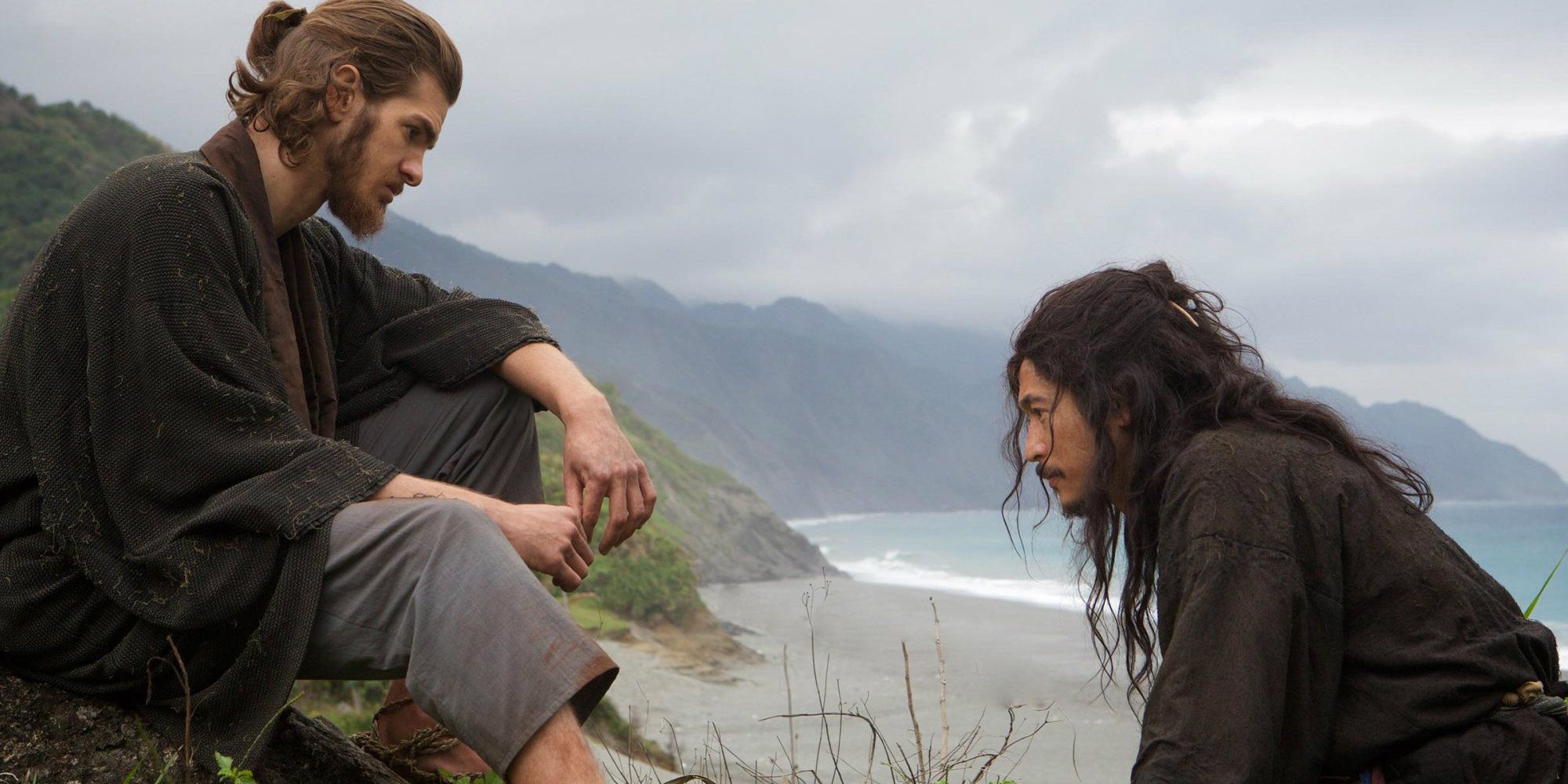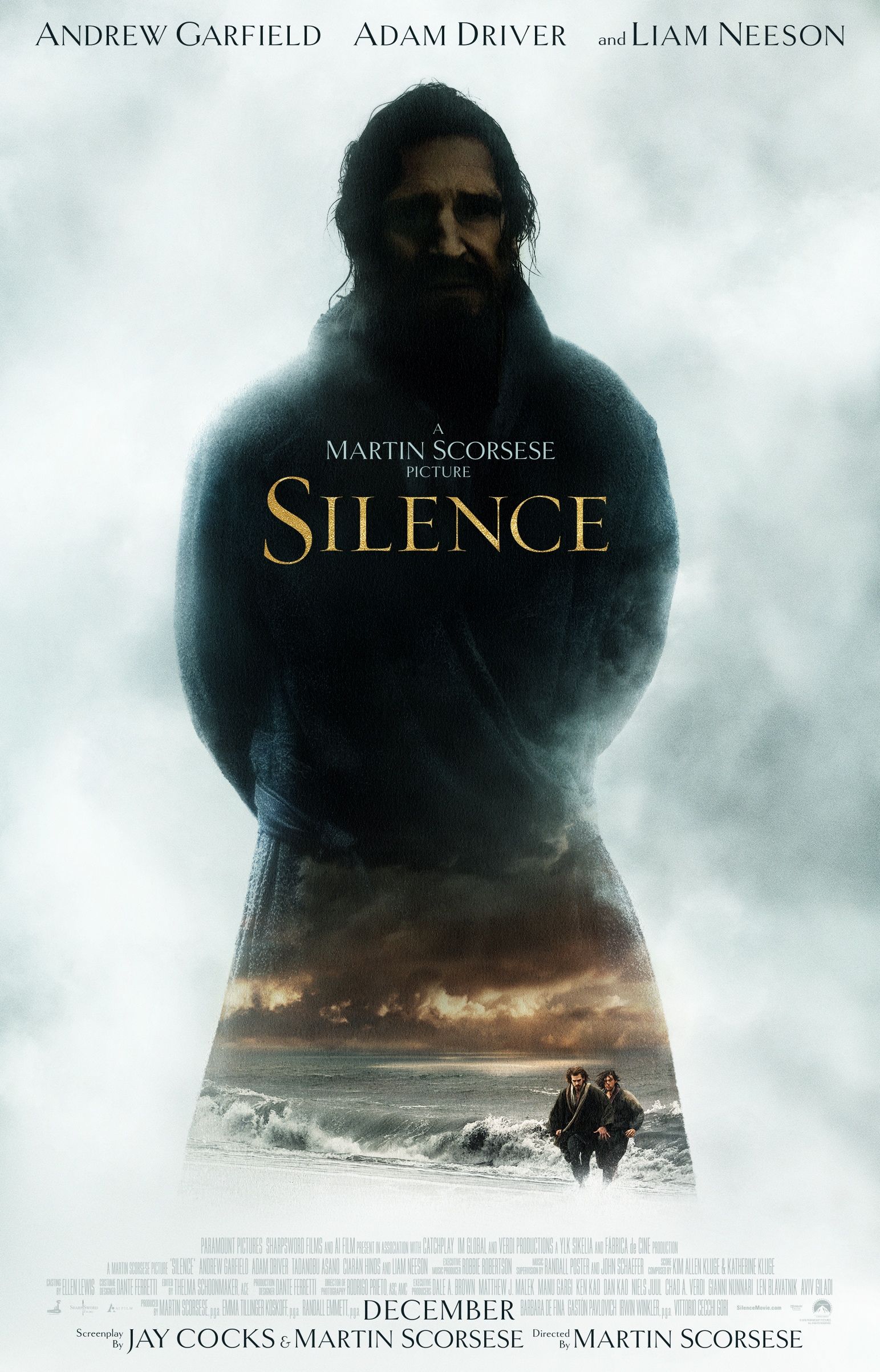Silence is beautifully-crafted and well-acted, but often frustrating in the way that it examines spirituality through historical drama.
17th-century Portuguese, Jesuit practitioners, Father Sebastião Rodrigues (Andrew Garfield) and Father Francisco Garupe (Adam Driver) are shocked one day when they receive word that their mentor, one Father Cristóvão Ferreira (Liam Neeson) has committed apostasy and renounced God while in Japan - a country where Catholicism and the practice of Christianity are forbidden. Rodrigues and Garupe thus set out to travel to Japan in the hopes of tracking down Father Ferreira and learning the truth about what happened to him, despite being warned that they will be the final Jesuit priests sent on a mission to the country.
Rodrigues and Garupe are guided on their journey to Japan by Kichijiro (Yosuke Kubozuka), an often-drunk Japanese fisherman who claims to be a Christian himself, and soon find themselves preaching to (and receiving protection from) a village populated by secret Christian followers - though their presence helps attract the attention of samurai, looking to stomp out any and all hints of Christianity in Japan. As the humble and devoted Christians of Japan endure all sorts of brutal treatment and torture, as part of a larger effort to smoke out not only Christians but any and all Jesuit priests in the country, Rodrigues begins to find himself beset with doubts... and not just about the mission that brought him to this land in the first place.
Directed and co-written (with his The Age of Innocence and Gangs of New York writer Jay Cocks) by legendary filmmaker Martin Scorsese, Silence is a film adaptation of Shūsaku Endō's 1966 novel of the same name, which Scorsese spent multiple decades attempting to get produced before finally succeeding. That Silence is clearly a project with significant personal meaning for Scorsese shines through in the actual movie and its exploration of faith and belief - though by the same count, this makes the film one of the director's more esoteric offerings in recent memory. Silence is beautifully-crafted and well-acted, but often frustrating in the way that it examines spirituality through historical drama.
Although Scorsese has explored issues of spirituality (faith and doubt) most explicitly before in such films as The Last Temptation of Christ and Kundun, Silence arguably bears more of a similarity to Mel Gibson's The Passion of the Christ, in terms of narrative structure and approach. Silence is (overly) repetitious in design, cycling through familiar sequences of Father Sebastião Rodrigues struggling, either psychologically and/or through mental torture inflicted upon him by various Japanese samurai, with doubts about not only God's silence to the suffering that's happening around him, but questions about whether his presence in Japan does more harm than good. The result is that Silence succeeds at taking audiences on a journey as arduous and taxing as the one its protagonist undergoes, but does so at the expense of exploring other important elements of this story - such as, what conditions (social and cultural) would inspire people in feudal-era Japan to devote themselves so feverishly to Catholicism - that would have added more substance to the story. These elements provide important context for Endō’s source material and their exclusion in Scorsese's film weakens its narrative, for related reasons.
The main setting of Japan ("played" here by Taiwan and Taipei) is gorgeously photographed by Scorsese and Silence cinematographer Rodrigo Prieto (The Wolf of Wall Street), with visual motifs of rainy days and mist-covered mountains creating a sense of atmosphere that is no doubt meant to emulate the painterly storytelling style commonly associated with arthouse Japanese cinema. Problem is, Silence comes off more as an imitation of that style than one that Scorse comfortably appropriates and makes feel like his own here. This is most apparent in the film's careful, yet also heavy-handed use of sound and, yes, silence (for thematic effect) and its pacing - which tends to drag over the course of the film's lengthy runtime, rather than pass by unnoticeable. Like its protagonist's understanding of the country, Silence clearly admires Japan and its culture on the surface level, but lacks depth in this respect.
This problem, as indicated before, in part arises from Silence's larger fixation with Rodrigues' personal journey and struggles at the expense of better developing its Japanese characters - in turn making the Rodrigues character into more of a white savior type (or, rather, white martyr type) in the story being told here than was intended. Shortcomings in how the character is written aside however, Andrew Garfield does fine work in the role and in the process provides an interesting foil to the spiritual man whom he portrayed in another recent film, Hacksaw Ridge. The performances by Liam Neeson and Adam Driver as Rodrigues' mentor and peer are similarly solid and three-dimensional (the significant weight losses that all of these actors went through aside), yet their characters and their arcs in the movie are even less satisfying by comparison - primarily serving to advance Rodrigues' own physical/spiritual journey, more than anything else.
Due to their lack of development, the Japanese characters in Silence tend to be either threatening, yet two-dimensional antagonists (such as Issey Ogata's Inquisitor and Tadanobu Asano's Interpreter) or sympathetic, yet flat lower-class Christians (such as Shinya Tsukamoto's Mokichi). The exception to this dichotomy is Kichijiro (Yosuke Kubozuka), a complicated character who could almost be the comic relief - were he and his story not so tragic and pitiable. The Japanese cast members in Silence deliver strong performances all the same and in certain cases, their characters are arguably more compelling than the film's leads - despite playing a supporting role in the proceedings and having to spend much of their screentime either being tormented or tormenting others.
In the end, Silence might prove to be something of a polarizing movie; some filmgoers will no doubt connect with its exploration of history and religion, while others will admire the fine craftsmanship here but feel a disconnect to the story and characters and/or be frustrated with its white savior narrative trappings. Setting the history behind its development aside, Silence still feels like a rather personal film by Scorsese in a way that some of his most popular, crowd-pleasing work over the past decade (see The Departed) hasn't. As such, it's perhaps to be expected that Silence will resonate with some people - those who are intrigued by the subject matter and/or have enjoyed Scorsese's previous films about religion - but may leave "non-believers" less engaged, by comparison.
TRAILER
Silence is now playing in U.S. theaters. It is 159 minutes long and is Rated R for some disturbing violent content.
Let us know what you thought of the film in the comments section!

